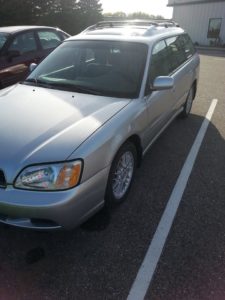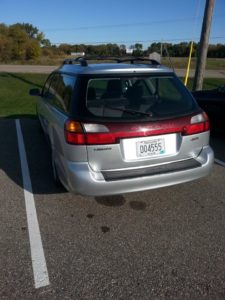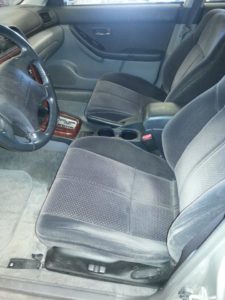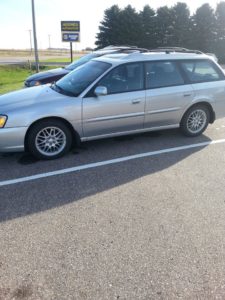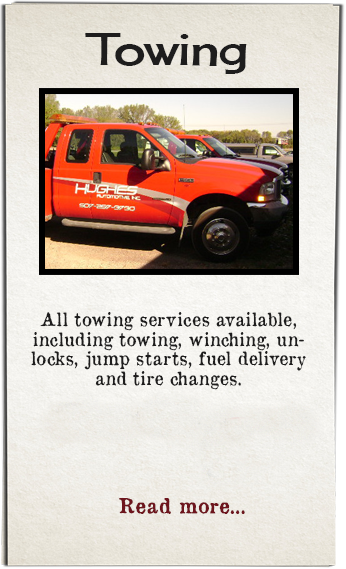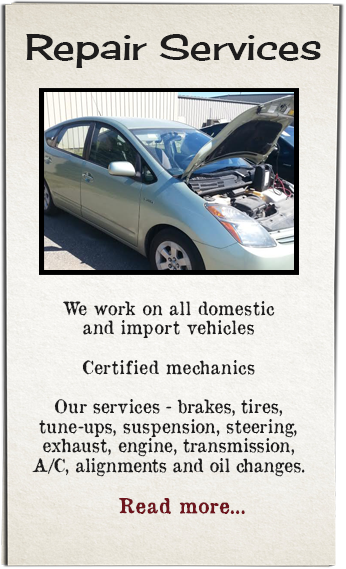Hello, welcome to Hughes Automotive Inc. Today’s focus is batteries. It seems like everything in Eagle Lake runs on batteries. Of course, the batteries we’re most concerned with here at Hughes Automotive Inc are those in our customer’s vehicles. Just like the batteries in our smoke detectors or TV remote, car batteries wear out and need to be replaced. There are a couple of things Eagle Lake drivers should know when looking for a new battery.
Look for two measurements that come into play: cold cranking amps and reserve capacity.
Let’s start with cold cranking amps.  This can be thought of as the power output used to start a cold sedan engine. The number of cold cranking amps you need depends on your vehicle and where you live in MN, specifically how cold it is. (Many MN motorists have first-hand experience trying to start their car on a cold winter morning.) The two factors are that the colder your sedan’s engine is, the more power it takes to turn the engine over to get it started. It has all that cold, sluggish oil to contend with.
This can be thought of as the power output used to start a cold sedan engine. The number of cold cranking amps you need depends on your vehicle and where you live in MN, specifically how cold it is. (Many MN motorists have first-hand experience trying to start their car on a cold winter morning.) The two factors are that the colder your sedan’s engine is, the more power it takes to turn the engine over to get it started. It has all that cold, sluggish oil to contend with.
The other factor is that the chemical reaction in the battery that creates electrical energy is less efficient when the temperature dips. At Hughes Automotive Inc, we consult the table shown below. Let’s say it’s eighty degrees Fahrenheit in Eagle Lake. At that temperature, 100% of the battery’s power is available. At freezing, only 65% of battery power is available, but it requires 155% as much power to start the engine as it did at eighty degrees.
As you can see from the chart, the colder it gets, more power’s needed, but the available power drops.
Percent of Power Available Celsius Fahrenheit Power Required 100 27 80 100 65 0 32 155 40 -22 0 210 25 -32 20 350
So if you live where it’s cold in MN, you need a battery with more cold cranking amps than you do where it’s moderate or hot. The battery that originally came with your sedan was based on averages. At Hughes Automotive Inc, we like to remind Eagle Lake motorists that they should always get at least as many cold cranking amps as their auto makers recommend, but may want to upgrade if they live where it gets real cold.
And the type of engine you have will impact the battery you need: A six-cylinder engine requires more cold cranking amps than a four. An eight cylinder needs even more. And diesel sedans require more than a gasoline engine with the same number of cylinders.
Now on to reserve capacity: It’s a measurement of the number of minutes of reserve power the battery has at a given load. The number is more important to Eagle Lake motorists these days because of parasitic drain. Parasitic drain is the battery energy that’s used when the key is off in your sedan. So, the power drawn by the security system, the remote start system, even the power the computers require to maintain their memory.
Reserves are also needed when you make very short trips around Eagle Lake. You’re not driving long enough for the battery to recover the energy it used to start the engine. So go with the minimum recommended by your manufacturer or Hughes Automotive Inc and upgrade if you need more.
Talk with us at Hughes Automotive Inc about your options. If you need more from your battery, a larger, heavy-duty battery may be called for. At Hughes Automotive Inc in Eagle Lake, we remind our customers that it’s very important that the new battery fits your sedan: the terminals can’t be touching other parts.
Batteries are a big ticket item for most MN car owners, so the warranty gives piece of mind. There’re two kinds of car battery warranties: pro-rated and free replacement. With the pro-rated, you get a credit for a portion of the battery if it fails during the warranty period. With a free replacement warranty, you get just that, a free replacement. Be sure to ask us at Hughes Automotive Inc about the warranty so you know what you’re getting.

